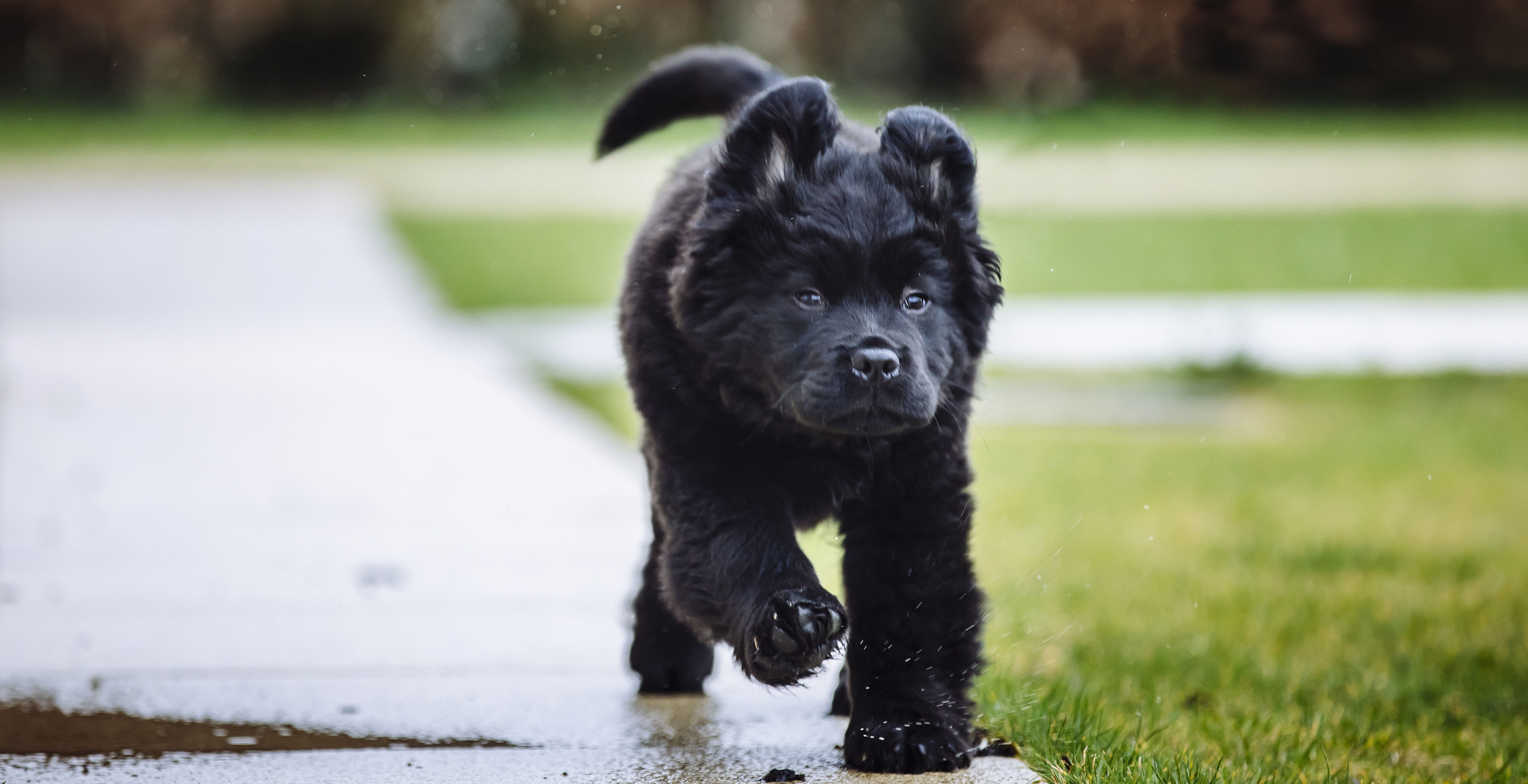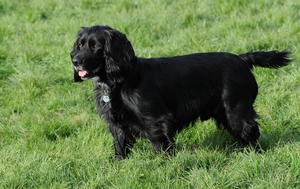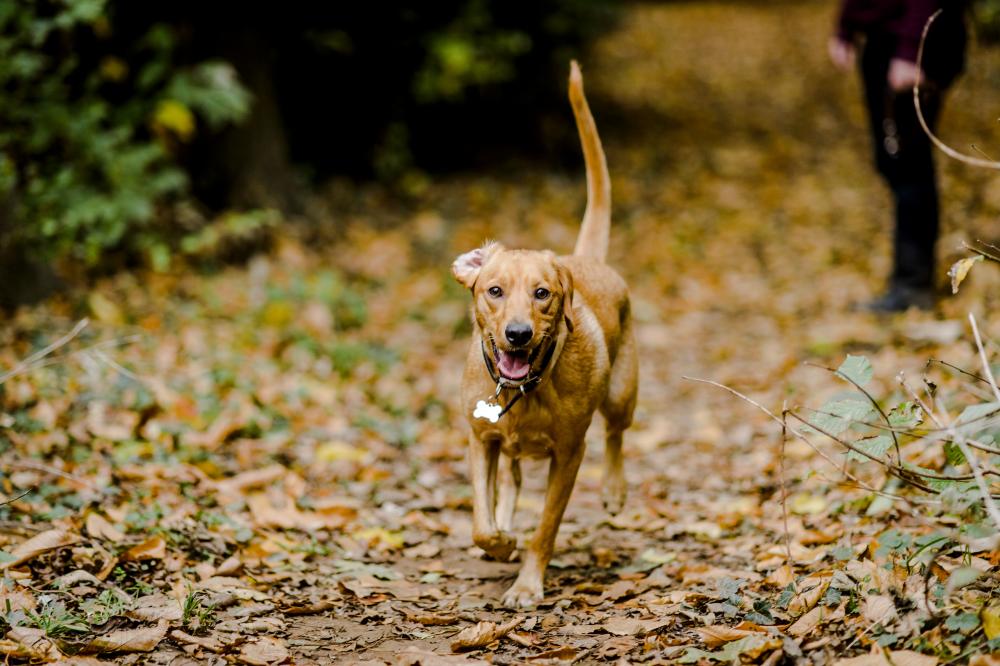
Why do dogs wag their tails?
The tail wag: a cute way our dogs tell us they’re happy…or is it?
Although looking at the way a dog is moving their tail can help you to understand how they are feeling, it’s really important to also take note of what the rest of their body is doing, along with their facial expression, to get a better picture of their body language.
When does tail wagging begin?
Puppies aren’t born wagging their tails, as cute as that would be! Tail wagging develops differently in different breeds, but it usually begins around three to four weeks into life.
The wag of a tail is instinctive in dogs; it’s used as part of their varied communication with one another and with humans.
While tail wagging is instinctive, the shape, size and way the tail moves will vary from breed to breed and individually. For example, most golden retrievers have large expressive tails that tend to swish from side to side when walking, whereas whippets and greyhounds tend to hold their tails far lower than the average breed. The spitz breeds, like huskies and malamutes, have tails that curl backwards; sometimes the tip of the tail will even touch the dog’s back.
Despite these differences, along with the size and shape of today’s breeds, most dogs tend to understand each other and communicate well if they are socialised appropriately.
If you have a puppy, it’s a good idea to introduce them to a range of well-behaved adult dogs of differing breeds – this way they will get used to the variations within their own species and not become fearful of unfamiliar breeds or dogs of different sizes.
Tail docking
Dogs missing part or all of their tails may have an immediate disadvantage over other dogs in terms of their communication skills. Tail docking makes it harder for owners to read their beloved pup correctly, and more difficult for other dogs to understand them too, especially if the tail has been docked close to the body.
A dog with a docked tail loses one of their most valued communication methods. This means that their intentions to other dogs might be miscommunicated and an owner or person interacting with the dog might not fully understand how the dog is feeling.
How to read your dog
Many people believe that a waggy tail means you have a happy dog, but it’s important to take into consideration what is happening around them at the time and, more importantly, what the rest of your dog’s body is telling you about their current mood.
Tail expression:
- A broad, smooth, sweeping tail (not tucked or high) means the dog is currently relaxed and comfortable
- Helicopter tail (the type that moves in circular motions) is normally reserved for people your dog knows and for their close doggy friends. This usually indicates he or she is feeling excited and particularly social. If you’re getting the helicopter tail, your dog is really pleased to see you!
- If your dog’s tail wags slightly to the right, research suggests this could indicate your dog knows the person or dog and it is a wag of recognition
- A tucked tail, or a tail that is a lot lower but wagging slightly, usually means the dog is worried. Usually used to communicate “I’m no threat” to other dogs and people.
- A tail clamped between your dog’s legs means that your dog is really worried and they feel the need to protect themselves
- A high tail that’s wagging fast often indicates arousal and excitement, but how the dog really feels will be down to all sorts of factors, such as breed, their individual personality, what the rest of their body is doing and what activity they are doing at the time
- Some dogs tend to move their tails from side to side rapidly when focussing on a scent. You might see this is in your own dog if they are searching for a toy you have hidden or have picked up an interesting and exciting smell to track. This movement doesn’t serve to communicate to others; it’s thought just to be a sign of extreme concentration (much like when we humans push our tongues out when concentrating hard!).
You should always be aware of signs that your dog or puppy is feeling worried. These could include:
- avoidance, moving away, hiding
- tail tucked under, looking away, appearing ‘smaller’
- lip licking, yawning (when not sleepy), paw raising
- growling, flashing teeth, snapping, biting
If your dog displays any of the above behaviours you should stop what you’re doing with your dog and give them some space.
It’s important to remember that our dogs use their whole body, including the tail, to express how they are feeling, and it’s our responsibility to do our best to pay attention to, and understand what they are ‘saying’.
Always be alert and sensitive to your dog’s communication to keep them happy and safe.






